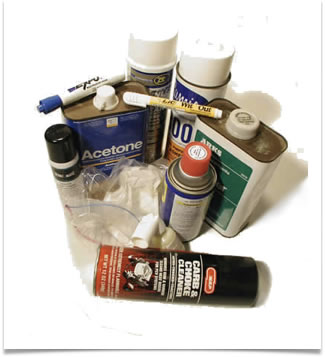 Volatile Solvents – liquids that vaporize at room temperature
Volatile Solvents – liquids that vaporize at room temperatureAccording to the National Institute on Drug Abuse (NIDA), inhalants are defined as the following:
Inhalants are a class of substances that produce intoxicating chemical vapors that people inhale. These include products easily bought and found in the home, school, or workplace, such as spray paints, correction fluids, felt-tip markers, glues, and cleaning fluids.
When these substances are used for getting high, they are called inhalants. While we are commonly exposed to volatile solvents and other inhalants in the home and workplace, most of us are unaware that these substances can be inhaled as drugs. This is probably because most inhalants were not designed to be used that way and because normal use results in low inhaled concentration.
Inhalants are often called "Gateway Drugs" because they lead to use of other drugs, such as marijuana and methamphetamines. Sometimes the chemical itself becomes the drug of choice and is abused into adulthood. Healthcare professionals and the public generally lack awareness of the toxic effects of inhalants and do not consider that household products could be addicting.
According to the National Institute on Drug Abuse (2024) these are the four general categories of inhalants.
 Volatile Solvents – liquids that vaporize at room temperature
Volatile Solvents – liquids that vaporize at room temperature
Aerosols
Gases
Nitrites
Substances inhalation techniques
The high from the inhalants are short lived so individuals sustain the high by inhaling again and again.
Those who use inhalants breathe in the fumes through their nose or mouth by:
Inhalants are most commonly used by young adolescent by breathing them in through the mouth (huffing or bagging) or the nose (sniffing or snorting).
https://nida.nih.gov/research-topics/inhalants
Instant Feedback:
The term "Gateway Drug" means that it leads to the commission of crimes.
© RnCeus.com